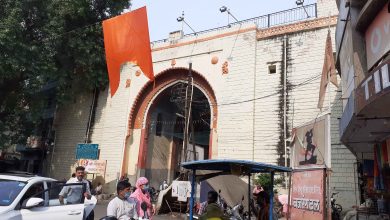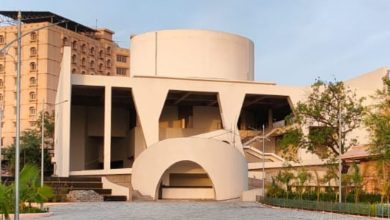HC Seeks Details of Restoration Plan for Kasturchand Park

The Nagpur bench of the Bombay High Court has once again turned its attention to the restoration of Kasturchand Park, one of the city’s most iconic public spaces. With overgrown vegetation, crumbling heritage structures, and a site that has increasingly been used for commercial purposes, the court has set a strict deadline for authorities to submit detailed plans on how to restore and preserve this Grade-1 heritage monument.
The November 13 deadline requires key local authorities, including the Nagpur Municipal Corporation (NMC), the collector, the PWD chief engineer, and the Heritage Conservation Committee, to file affidavits detailing the current state of Kasturchand Park, the planned restoration efforts, and what actions have been taken to date.
Why Is Kasturchand Park Significant?
Kasturchand Park isn’t just a regular public space—it’s a part of Nagpur’s history. As a Grade-1 heritage site, it houses architectural elements and monuments that are culturally significant, making its preservation not just a local responsibility but a matter of national importance. Over the years, however, the park has suffered from neglect, becoming a place for haphazard commercial events rather than a well-preserved historical site.
Court’s Concern: What Triggered the Deadline?
This isn’t the first time the court has expressed concern about the state of Kasturchand Park. In October 2021, a court order highlighted how the park was being used for commercial purposes at minimal rent, allowing event organizers to make substantial profits while the park itself suffered.
Fast forward to 2023, and not much seems to have changed. Overgrown vegetation and deteriorating structures dominate the once-pristine space, with little sign of the previous court orders being implemented.
Key Players in the Restoration Process
The restoration of Kasturchand Park involves several local authorities, each of whom plays a critical role in ensuring the park’s future:
Nagpur Municipal Corporation (NMC)
As the city’s municipal body, the NMC is responsible for the maintenance of public spaces, including Kasturchand Park. The court has specifically directed them to undertake an audit and submit an action plan for restoring the park to its former glory.
The Collector
The collector’s office plays a role in managing the land leases of Kasturchand Park. In previous court orders, the collector was asked to provide details on whether there were any lease violations and what actions were taken to correct these.
Public Works Department (PWD)
The PWD, which oversees civil infrastructure projects, is responsible for ensuring that restoration work is carried out in a manner that respects the heritage status of the park while making it accessible and enjoyable for the public.
Heritage Conservation Committee
Tasked with overseeing the preservation of historical monuments, the Heritage Conservation Committee plays a key role in ensuring that the park’s architectural elements and monuments are restored with respect to their historical significance.
Past Orders and Restoration Plans
The court’s scrutiny of the park isn’t new. Back in September 2020, there was a stark difference between what was reported to the court regarding the condition of the park and what was observed in reality. Filth, uneven surfaces, and crumbling structures were a far cry from the affidavits that painted a more positive picture.
Since then, the court has been pushing local authorities to take the matter more seriously. In 2021, the issue of commercial use and minimal rent leases came into focus. The court directed the collector to submit a report on the lease violations and recommend ways for the government to benefit from the profits event organizers were making off the park’s use.
Why Restoration Has Taken So Long
Restoration projects, especially those involving heritage sites, tend to be complex. They require careful planning, coordination between various authorities, and significant funding. However, the main issue seems to be the lack of a cohesive plan and timely action.
The court’s frustration is palpable, given the multiple orders over the past few years that have not led to any tangible improvements at Kasturchand Park. This time, the court has set a clear deadline of November 13, with an expectation that this will finally lead to real change.
What Needs to Be Done to Restore Kasturchand Park
For Kasturchand Park to be restored, several steps need to be taken, and they need to happen fast:
1. Clearing Overgrown Vegetation
The overgrown plants and weeds are not just an eyesore but also a potential hazard to the heritage structures. This is one of the first things that needs to be addressed.
2. Restoring Heritage Structures
The Grade-1 monument at the center of Kasturchand Park is in dire need of restoration. This will require expert architectural input and the use of materials that are appropriate for the historical period.
3. Regular Maintenance
Once the initial restoration is completed, it’s essential that the park is regularly maintained. This includes landscaping, cleaning, and ensuring that the structures remain in good condition.
4. Reducing Commercial Use
While commercial events bring in revenue, they also contribute to the degradation of the park. Strict guidelines need to be set for how the park can be used for events, ensuring that its heritage is preserved.
The Role of Public Awareness
Restoring Kasturchand Park isn’t just the responsibility of local authorities. The public also has a role to play in ensuring that the park remains clean and well-maintained. Public awareness campaigns could go a long way in encouraging residents to take pride in their local heritage.
Court’s Expected Outcomes
With the November 13 deadline fast approaching, the court expects detailed affidavits from all the involved parties. These affidavits should cover the current condition of the park, what restoration steps have been taken, and what the long-term plans are for preserving the park.
The court has also requested suggestions for how income generated from commercial events can be shared with the government to fund ongoing restoration and maintenance efforts.
Why Kasturchand Park’s Future Matters
Kasturchand Park is not just a public space; it’s a part of Nagpur’s history. The park’s future is tied to the city’s identity, and its preservation is crucial for both cultural and historical reasons. As the court continues to push for action, there is hope that Kasturchand Park will once again become a well-maintained, historically significant space for the people of Nagpur to enjoy.
The restoration of Kasturchand Park is long overdue. The involvement of the court has added pressure on local authorities to finally take action, but time will tell whether the November 13 deadline will lead to real change. With the park’s historical significance and the court’s continued scrutiny, there’s hope that Kasturchand Park will soon be restored to its former glory.
1. What is the historical significance of Kasturchand Park?
Kasturchand Park is a Grade-1 heritage site in Nagpur, known for its historical monuments and cultural importance.
2. Why is the court involved in the restoration of Kasturchand Park?
The court stepped in due to the park’s deteriorating condition and concerns about its use for commercial events at minimal rent.
3. What are the main challenges in restoring Kasturchand Park?
Key challenges include overgrown vegetation, crumbling heritage structures, and the lack of a cohesive restoration plan.
4. Who is responsible for restoring Kasturchand Park?
The restoration involves the Nagpur Municipal Corporation, the collector, the PWD, and the Heritage Conservation Committee.
5. What is the deadline for submitting the restoration plan for Kasturchand Park?
The court has set a deadline of November 13 for authorities to submit their detailed restoration plans.









